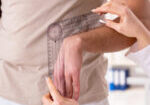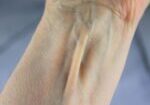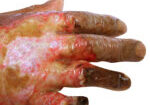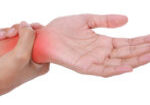CHT认证简介
CHT 考试是什么?
认证手部治疗师 (CHT) 考试是一项严格的资格认证考试,旨在验证治疗师在上肢康复方面的高级临床技能。该考试由手部治疗认证委员会 (HTCC) 管理,专为专注于手部治疗的职业治疗师和物理治疗师而设计。通过此考试表明治疗师在治疗从肩部到手指的损伤和疾病方面拥有深厚的专业知识。
谁应该参加 CHT 模拟考试?
如果您计划参加 CHT 考试,参加模拟考试至关重要。拥有至少 3 年临床经验和 4,000 小时手部治疗经验的职业治疗师 (OT) 和物理治疗师 (PT) 应该将模拟考试作为备考策略的常规组成部分。
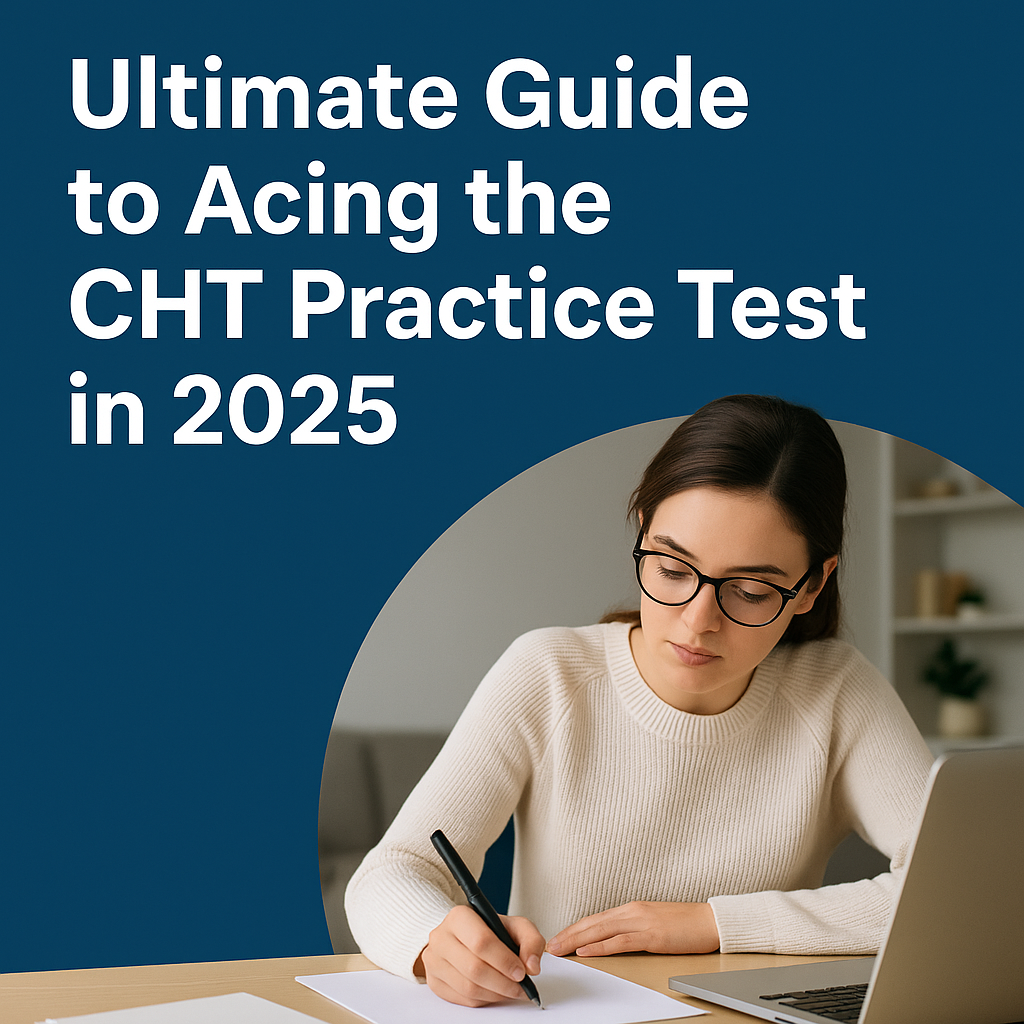
CHT 模拟考试的重要性
为什么模拟考试至关重要
模拟考试不仅仅是一次排练,更是一种自我评估工具。它模拟真实的考试体验,有助于减轻焦虑,调整节奏,并发现薄弱环节。许多成功的CHT考生认为,模拟考试提升了他们的自信心,并提高了分数。
他们如何提高成功率
练习测试可以反复接触真实题型,从而强化记忆并提高对考试逻辑的熟悉程度。研究表明,坚持进行模拟考试的考生比仅仅依赖阅读材料的考生更有可能在第一次考试中通过。
CHT 模拟考试的结构
问题数量和格式
CHT 官方考试包含 200 道选择题。模拟考试通常采用这种格式,以便准确模拟考试内容。模拟考试的时间通常与实际 4 小时的考试时长一致。
涵盖的关键主题和领域
测试涵盖几个主要领域:
- 评估
- 治疗干预
- 矫形器制作
- 解剖学和生理学
- 临床推理
练习测试通常反映相同的加权结构,以便您可以全面做好准备。
需要关注的内容领域
解剖学和生理学
预计会涉及上肢肌肉骨骼、神经和血管系统的结构和功能的详细问题。了解神经支配和血液供应至关重要。
治疗技术
这些疗法包括超声波、石蜡疗法、手法治疗和本体感受训练等。练习测试通常包含基于场景的问题,以测试您选择最有效干预措施的能力。
评估与评价
你必须知道如何解读测角仪读数、强度测试结果以及各种功能评估。练习题通常会挑战你的临床决策能力。
夹板和治疗方式
准备回答有关夹板选择、设计、安装和材料的问题。练习测试可能会出现一些需要您选择最佳矫形器的临床病例。
CHT 模拟考试的最佳资源
手部治疗学院 (Hand Therapy Academy) 是练习 CHT 测试的最佳在线平台之一。在这里,您可以找到完整的 CHT 练习测试以及 免费演示版.
推荐书籍
- 手部和上肢康复 作者:Hunter
- 手部和上肢矫形干预
CHT 模拟考试样题及答案
多项选择题示例题
- 哪根神经支配拇长屈肌?
- A. 径向
- B. 尺骨
- C.中位数✅
- D. 腋窝
- A. 径向
- 一位患者患有胸花畸形。哪种夹板最合适?
- A. 背侧阻断夹板
- B.静态伸展夹板✅
- C. 腕关节夹板
- D. 掌侧板夹板
- A. 背侧阻断夹板
理由和解释
每个练习题都应包含解释。例如,正中神经支配拇长屈肌,这有助于拇指屈曲——这在对抗性练习中至关重要。
如何有效使用 CHT 练习测试
测试模拟策略
为了模拟真实的压力,请务必在计时条件下进行模拟测试。请关闭干扰因素,使用计时器,并坐在桌子前。
时间管理技巧
将考试分成四个1小时的时间段。大约每1.2分钟做一道题,最后留出一些时间复习。
CHT考试准备学习计划
30 天学习指南(根据需要重复)
| 日范围 | 重点领域 |
| 第 1-7 天 | 解剖学评论 |
| 第8-14天 | 夹板和治疗方式 |
| 第15-21天 | 评估技术 |
| 第22-28天 | 模拟考试 |
| 第29天 | 复习错过的问题 |
| 第30天 | 全长模拟测试 |
每周分析和提示
每周分成2-3个内容模块。轮流阅读、测试和复习。保持一致,避免临时抱佛脚。
准备时应避免的错误
跳过错误答案的复习
不要只看你的分数——分析你的错误答案。理解 为什么 你犯了错误,这是留住的关键。
死记硬背,却不理解
仅仅了解事实是不够的。CHT考试考察的是知识的应用能力。注重临床推理能力。
CHT 考试日:预期内容
注册和要求
通过 HTCC 网站注册。请确保您符合资格要求,包括执照和工作时间。
考试环境和政策
您将在 Prometric 考试中心参加考试。请携带两种身份证件并提前到达。考试中心内禁止携带手机、笔记或计算器。
如何分析你的模拟考试结果
识别薄弱环节
使用您的实践测试分数来找出问题点——无论是解剖学、夹板还是患者评估。
制定有针对性的复习计划
用60%的复习时间复习薄弱环节,用40%的复习时间巩固优势。每2-3天轮换一次主题。
推荐的学习小组和论坛
在线支持社区
- OT/PT Facebook群组
- Reddit 的 r/OccupationalTherapy
- HTCC 社区论坛
同行评审和讨论
与他人一起学习有助于巩固学习成果。试着大声解释你的答案——教学是强大的记忆工具。
来自认证手部治疗师的专业建议
来自近期过路者的最佳建议
- “我每个周末都会做一次完整的练习测试。”
- “抽认卡帮助我记住了神经通路,拯救了我的生命。”
心态和激励技巧
保持积极乐观,并想象成功的景象。即使感到不知所措,也要记住自己最初的初衷——帮助患者健康成长。
关于 CHT 模拟考试的常见问题解答
CHT 模拟考试和真实考试相似吗?
是的,大多数知名的考试都模仿实际考试的形式和难度。
我应该参加多少次模拟考试?
考试前至少进行 3-5 次全长模拟考试是理想的。
通过率是多少?
通过率每年在60-70%左右波动。
问题是否重复?
不完全是,但概念和场景经常重叠。
我可以多次重考模拟考试吗?
是的。事实上,反复接触相同的问题可以增强记忆力。
结论
这 CHT 练习测试 是你征服真实考试的秘密武器。有了结构化的学习计划、高质量的资源以及认真复习的纪律,成功指日可待。拥抱学习之旅,相信你的准备。
更多阅读内容
新毕业生或学生的手部治疗
为应届毕业生或二级实习生准备手部治疗的提示 您在手部治疗中需要了解的一切都从上肢解剖学开始。这是一个可供查看的快速清单,希望可以帮助您开始新的手部治疗设置。作者: Tristany Hightower 我建议,作为……
阅读更多探索独特的手部解剖结构
探索独特的手部解剖结构 人类的手部设计精巧,结合了精细运动能力和力量,使我们能够执行精细运动任务,从精细手术到更粗大的运动任务,例如搬运重物。然而,没有两只手是完全相同的。解剖学差异虽然……
阅读更多手部烧伤的矫形器选择
作者:Sophia Grimm 手部烧伤的治疗非常具有挑战性,急性损伤后尽早开始成功的康复治疗。烧伤后,疤痕挛缩是手部畸形的主要原因。因此,适当的矫形干预是预防关节和韧带挛缩的关键(Kelly、Berenz & Williams,2019)。固定目标如下……
阅读更多尺侧手腕疼痛的 3 个常见原因和非手术手部治疗方案
手腕尺侧疼痛的 3 个常见原因
阅读更多注册即可直接将更新发送到您的收件箱!
注册我们,我们将定期向您发送有关手部治疗的所有内容的博客文章、每次上传新视频和教程时的通知,以及讲义、协议和其他有用信息。


